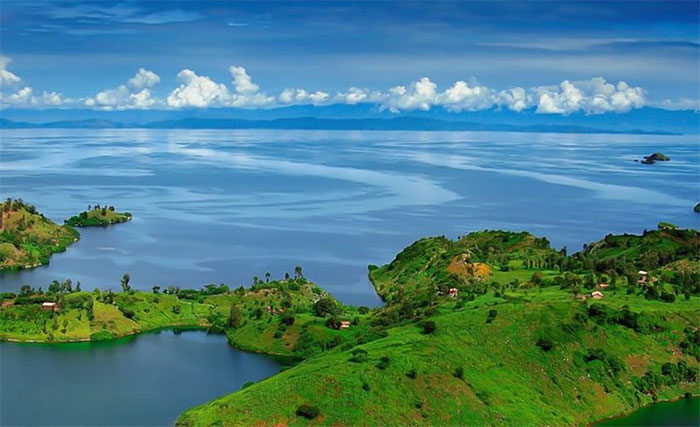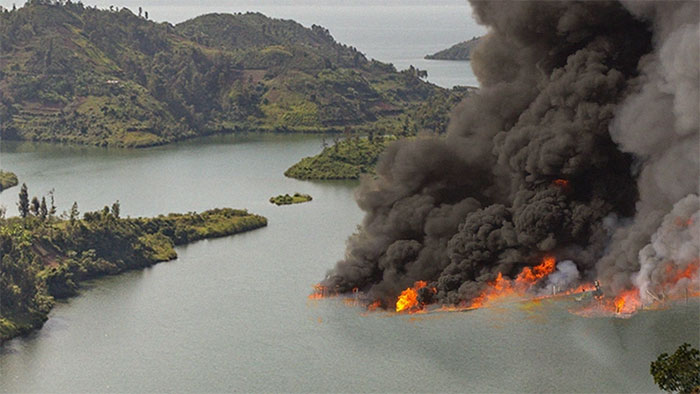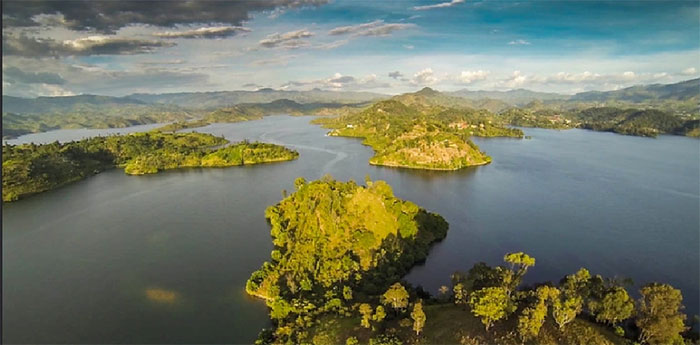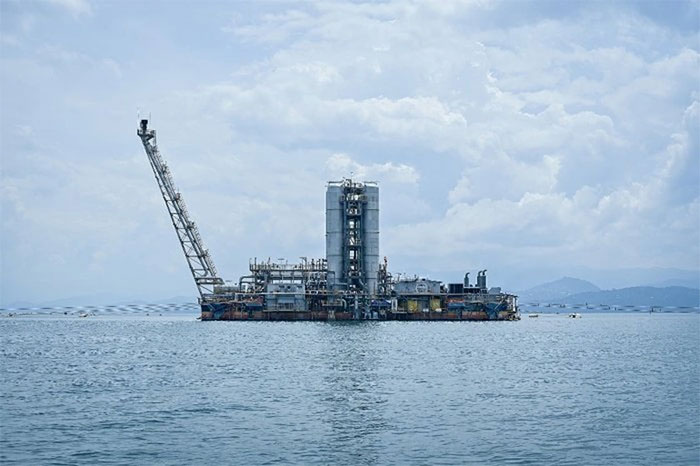No one would expect that a lake with such a peaceful, picturesque appearance hides a terrifying secret beneath its surface, keeping 2 million people in the surrounding area living in a state of “constant fear.”
Deceiving the Eye with a Picturesque Serenity
Lake Kivu is located on the border between the Democratic Republic of Congo and Rwanda. It is also one of the largest lakes in Africa. Lake Kivu drains into the Ruzizi River, which flows southward into Lake Tanganyika. The name “Kivu” means “lake” in Bantu.

The serene beauty above the surface of Lake Kivu. (Photo: Travel).
With a surface area of approximately 2,700 km2 and an elevation of over 1,400 meters above sea level, Lake Kivu is situated in a valley that is gradually splitting apart, resulting in volcanic activity in the region and making it particularly deep. The lake’s depth is about 480 meters, making it the eighth deepest lake in the world. Surrounding Lake Kivu are majestic mountain ranges.
At first glance, Lake Kivu appears as tranquil as many other lakes. The lush vegetation surrounding it creates a scene that is both poetic and dreamy. However, little do people know that beneath the water lies a terrifying danger, a toxic gas bomb that could explode at any moment. Specifically, this danger arises from the fact that beneath the lake’s surface is approximately 55 billion cubic meters of methane gas and other hazardous gases.
Contrary to its picturesque appearance, Lake Kivu has never been peaceful.
A Bomb That Could Explode at Any Moment
In May 2021, when the Nyiragongo volcano erupted, engineers at the floating power station on Lake Kivu looked up with anxious eyes. What worried them most was not the lava flows, earthquakes, or toxic gases. They were concerned about the waves that began to appear on the seemingly calm surface of the lake due to tremors from the eruption.

This place is likened to a “bomb” that could explode at any moment. (Photo: WhIf).
For hundreds of years, geological and volcanic activity has accumulated vast amounts of methane and CO2 gas beneath the lake. If this gas were to be released into the environment, it would be enough to create catastrophic destruction in the surrounding area.
“A volcano could cause a massive explosion, releasing huge amounts of toxic gas to the surface. It would create deadly clouds of toxic gas, directly impacting the lives of millions of people living nearby. That’s why we call this the lake of death,” said Francois Darchambeau, an environmental management expert at KivuWatt, in an interview with AFP.
There are only three lakes like this in the world: Lake Kivu, Lake Nyos, and Lake Monoun in northwest Cameroon.
In the 1980s, both Lake Nyos and Lake Monoun experienced CO2 gas eruptions, with the eruption at Lake Nyos resulting in over 1,700 deaths by asphyxiation.
However, it is noteworthy that the eruptions at these lakes occurred in remote areas. If Lake Kivu were to release toxic gas, 2 million people would be at risk of death. Thus, the residents living around this lake are always in fear of facing “death” at any moment from this “slow bomb.”
Constant Fear
The fear and haunting thoughts about Lake Kivu became even more pronounced when the Nyiragongo volcano suddenly erupted in the first half of 2021. The magma it released caused 32 deaths, destroyed hundreds of homes, and triggered tremors deep into the earth, even penetrating into Lake Kivu.

Lake Kivu is now one of the largest lakes in Africa. (Photo: Travel).
Standing on the power station at the lake’s surface, engineers watched the sky turn red, feeling uneasy.
“It’s truly terrifying. When the frequency of earthquakes increases, no one can predict what will happen,” a specialist remarked.

A barge extracting methane at the KivuWatt power plant on Lake Kivu. (Photo: Science).
The option of shutting down the power station and evacuating is being considered. However, closing it would have significant consequences, as this area produces about 30% of Rwanda’s annual electricity consumption. They harness energy from the lake itself.


















































